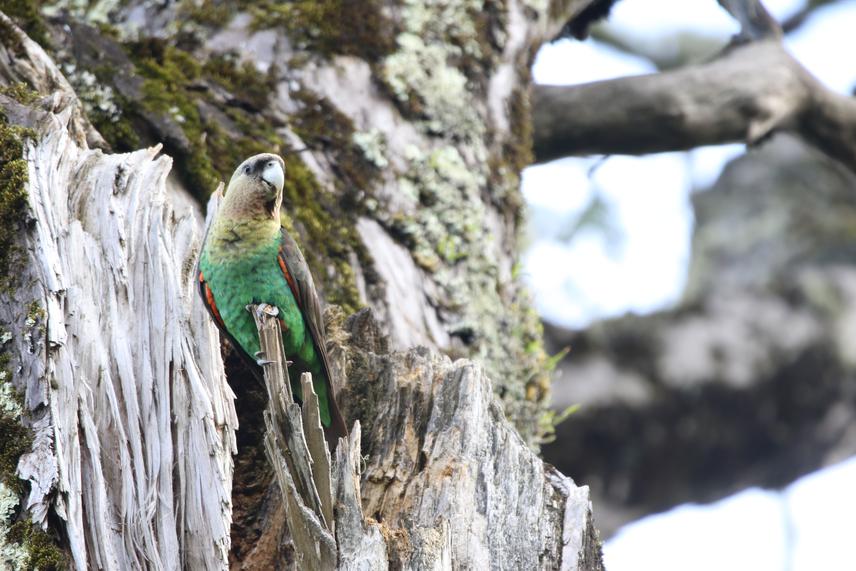Kathleen Frances Carstens
This project aims to contribute toward improving our understanding of the breeding ecology of the Cape Parrot and in turn better conserve this threatened parrot through increased breeding success. By mapping and characterising natural nest sites we will gain a deeper understanding of where this species breeds and what natural nests look like. We will integrate the knowledge gained on characteristics of natural nest sites and areas currently devoid of nest sites into the building and placement of nest boxes to optimise successful occupation by the parrots. Our work will also contribute to conserving large forest hardwoods from harvesting as we map current and potential nesting trees for Capes and work with the South African government to protect them.

Historical logging of in South African Mistbelt forests has reduced the number of nests for the endemic and threatened Cape parrot. There are only 1250 mature individuals left in the wild, and, before 2017, fewer than 15 nests from the entire country were known.
Our goal is to help conserve this species by ensuring it has sufficient nesting sites to grow optimally. We will begin by searching for and monitoring nests and cavities to better understand the species’ breeding ecology. Characteristics of natural nest sites will be used to build and install optimal artificial nests in areas lacking natural nesting sites.